Day 1: Wednesday, June 26
Construction and agricultural machine companies are committed to climate targets up to 2030 and later. How will autonomous technology help them fulfill these science-based targets?
Managing director
Stieler Technologie- & Marketing-Beratung GmbH & Co. KG
Germany
More and more machine manufacturers (OEMs) have committed to climate targets for 2030 and 2050. These targets are known as science-based targets. These targets will strongly influence the whole machine architecture of future machines and require new solutions for prime movers, hydraulics, drive and work functions. Electrification is one way, but not the only one. On the other hand, we must consider the work process and the potential for fulfilling future climate targets. Stieler deeply understands new drive technologies and autonomous machines with a forecast up to 2030. This presentation will show what big players do regarding automation and autonomy with their future machines. It will give examples of autonomous functions and autonomous machines in construction equipment and agricultural machines. Furthermore, it will show how autonomy will change existing technologies (prime movers, hydraulics, drive and work technology).
What the audience will learn
- What big players are doing regarding automation and autonomy with their future machines
- Examples of autonomous functions and autonomous machines in construction equipment and agricultural machines
- How autonomy will change existing technologies (prime movers, hydraulics, drive and work technology)
Introducing advancements in autonomy, automation and remote control technologies and their impacts on new off-road machine developments and usage
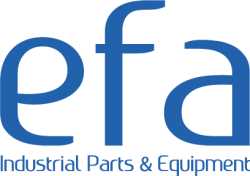 Theo Dondel
Theo DondelControls BU manager
EFA France
France
The presentation will focus on autonomy, automation and remote control technologies, explaining the basics, evolutions, state of development, key features and benefits. It will explore the role of autonomy – how autonomy is transforming off-road machinery, increasing operational efficiency, productivity and safety; automation's influence – from components to optimized system, how automation enhances precision, reliability and operational flexibility; the advancements of remote controls and their benefits in hazardous or inaccessible environments, enabling comfort, safety and efficiency; EFA case studies and success stories; future trends and opportunities – emerging trends, future developments and potential off-road applications; and the challenges of bringing advanced technologies to the market – integrating new technologies into off-road machines.
What the audience will learn
- How autonomy is transforming off-road machinery
- How automation enhances precision, reliability and operational flexibility
- How remote controls are enabling comfort, safety and efficiency in hazardous or inaccessible environments
- Which items could become emerging trends, future developments and potential off-road applications
- Where the difficulties lie in integrating new technologies into off-road machines
Futureproof your product R&D with the digitalized product lifecycle
 Tatu Hautala
Tatu HautalaManaging director
Gofore Germany
Germany
User expectations, business goals and future technology drive companies to implement increasingly complex machines. The traditional product development process and lifecycle management no longer serve the business. As the complexity of products increases, the process becomes expensive and slow. The digitalized and virtualized product development process enables faster and better-quality lifecycle management for the entire product. Learn more about the most important tools – such as digital concepts, model-based design, machine simulators and digital twins – that significantly boost the efficiency and quality of digital product R&D.
What the audience will learn
- Learn the key fundamentals to futureproof your R&D with a digitalized product lifecycle
- Learn how to ensure that your machine’s performance, environmental load or business model meets the requirements in an early phase
- Learn how to develop your machine’s control systems even before the first physical prototype of the machine
- Learn what kinds of systems modern simulators are and how they can be utilized in your control systems development
- Learn how a robust product configuration management solution ensures better visibility, better quality, and more reliable and efficient manufacturing
SDV and generative AI as game-changers in new-generation off-highway vehicles
 Mohideen Farouk
Mohideen FaroukDirector of business development - trucks and off-highway
L&T Technology Services
Germany
Generative AI is transforming the software development and testing landscape by automating and streamlining the creation and execution of code and test cases. Gen AI can boost off-highway product development teams, which are moving toward unmanned vehicles, by automating design, development and testing phases in the virtual realm. This will enable them to cope with the ever-closing gap between two vertices of the V cycle due to agile processes and the very nature of the development of software-defined vehicles (SDVs). So, looking from the context of SDVs, which these days are reverberating among vehicle software experts, Gen AI can be a game-changer.
What the audience will learn
- How to apply Gen AI methods, tools and philosophy to enable the product teams during the product development phase
- Gen AI use cases in off-highway (agriculture and construction) embedded product development
- How virtualization can be applied and practiced to make product development teams ready
- How to use Gen AI solutions for product validation in the virtual environment
Automating industrial vehicles: what are the software framework requirements?
 Peter Ngure
Peter NgureProduct manager
dSPACE
Germany
Automating industrial vehicles is complex. It requires mastering datalogging, data management, production software development, data reprocessing and validation and the tools required at each stage. The software tooling needs vary from one stage to the next. Data recording demands no silent loss of data packets, production software development needs handling of various programming languages, while replaying different data formats is a requirement during testing and validation.
Can we reduce this complexity via a single framework? This would reduce the number of software suppliers to a project, allow reuse of software components at different stages and enhance collaboration between departments.
What the audience will learn
- Software framework needs for datalogging, production SW development, data reprocessing and validation
- Handling of different file formats and standards, from MCAP to FMUs
- Handling different programming languages (C++/C, Python, Simulink) to integrate SW components or jobs
- Data recording without silent loss of data packets and deterministic processing
The future of autonomous operation: developing software-defined machines in a collaborative way
 Leandro Zaza
Leandro ZazaSenior technical sales manager
TTControl Srl
Italy
The Autonomous Operation Cluster (AOC), a cross-market initiative bundling industry-leading OEMs and technology providers, was founded in 2022 and introduced as a solution to overcome the limits of the off-highway application in comparison with the on-road ones. This initiative was a reaction to the trend of highly automated and autonomous machines requiring an increase in task execution efficiency and quality while minimizing costs. In the meantime, the role of software in mobile machinery architecture has been gaining even more significant importance. It is now time to talk about software-defined machinery, where incremental software functions are deployed in the vehicle even during the entire vehicle lifecycle. The presentation will explore how the Autonomous Operation Cluster answers the need of a flexible, modular and scalable software solution for long-lasting deployment in the field based on use cases.
What the audience will learn
- The importance of the Autonomous Operation Cluster
- The role of software in mobile machinery architectures (and how it changes)
- The importance of software-defined machinery
Multi-technology and mesh networking for machine swarms
 Heikki Keränen
Heikki KeränenHead of technology
Satel
Finland
The presentation will offer a real-life scenario from proof of concept, showing how meshing wi-fi technology and LTE are used together with RTK positioning to provide seamless connectivity for infra-construction machine swarm and how mesh and multi-technology enable uninterrupted productivity. What is the role of mesh? How to consider backhaul connectivity and antennas to enable reliable connectivity?
What the audience will learn
- Benefits of combining UHF, LTE and wi-fi
- Creating seamless connectivity to infra construction sites with mesh
- Antenna considerations for reliable connectivity
Easy-to-configure ADAS SW platform powered by high-level camera-based perception
 Hans Pflügl
Hans PflüglHead of automotive business unit
Eyyes
Austria
Eyyes is offering a SW platform that enables the user to configure individual ADAS and machine vision solutions for any kind of vehicle. The presentation explains the great configuration possibilities of the software platform and shows examples of implementation, ranging from simple reversing assistance to complete vehicle solutions with any number of cameras. The ability to process several neural networks individually for each camera in parallel optimizes the detection quality for a wide range of applications.
What the audience will learn
- How you benefit from using the Eyyes ADAS SW platform
- Available different types of warning strategies
- Using specific neural networks to improve classification quality
- Localization of objects and movement prediction
- Object-list streaming for sensor fusion and further use of perception results
Optimizing and maintaining hydraulic efficiency on mobile machinery
 Martin Cuthbert
Martin CuthbertManaging director
Webtec
Germany
The speaker will give an overview of the different diagnostic and maintenance options and what sensors and tools are available for the different approaches. As business models change and mobile machine fleets are increasingly leased with a service-level agreement, the hydraulic maintenance approach needs to be decided at the design stage. As the mobile machine goes from design to full production and then completes its first few years in service, how can you optimize hydraulic efficiency and maintain the hydraulic system afterward? How is it possible to balance the often conflicting needs of the customer, design, manufacturing and service engineer?
What the audience will learn
- The four approaches to hydraulic maintenance
- The range of sensors and tools available for each approach
- How they can benefit engineers involved in design, manufacturing and service
- The business case for collecting different types of data
- Application examples from the field
An architecture for multi-display setups in cabins with mobile remote access
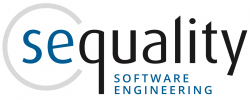 Stefan Larndorfer
Stefan LarndorferCEO
Sequality Software Engineering
Austria
Machines in the agricultural or industrial sectors are equipped with increasing numbers of cameras and sensors. They ensure that the complex machine can be supervised by a human operator in the cabin or controlled outside the cabin with a mobile device. In the talk, we present an architecture consisting of software and hardware middleware that can be the basis for such a solution. In particular, we will focus on messaging middleware that allows the integration of video streaming and CAN data across the vehicle in a multi-display cabin with mobile extensions.
What the audience will learn
- What are the usability requirements of a modern multi-display cabin?
- An approach to setting up the data bus on a vehicle to meet these requirements
- A best practice for how to show/update data and video streams across multiple displays
- Lessons learned with typical performance results on common hardware (i.Mx8) from a use case that will be shown
Day 2: Thursday, June 27
SafetyTouch: an evolutionary transformation in safe operation
 Frank Fleischer
Frank FleischerHead of technology and innovation
Rafi Group
Germany
The integration of SafetyTouch represents an evolutionary milestone in machine operation, particularly in agricultural and commercial vehicles. Until now, user interfaces have been limited in terms of safe input by conventional control mechanisms, often resulting in limited user experience. SafetyTouch, on the other hand, enables safety-related user input via intuitive touchscreen displays. The presentation deals with the challenges of realization and integration and the benefits of using safe touchscreens. Replacing traditional control elements with touchscreen displays not only increases flexibility but also simplifies user interaction, resulting in higher productivity and efficiency. With SafetyTouch, the industry is heading toward a transformation where safety and efficiency as well as intuitive and flexible operation are seamlessly combined, setting a new benchmark in the control of off-highway machinery.
What the audience will learn
- SafetyTouch and SafetyDisplay: what are they?
- How to realize safety-related inputs with touchscreens
- Simplifying user interfaces and workflows with SafetyTouch
Flexible approach of camera-based driver assistance systems for mobile machinery
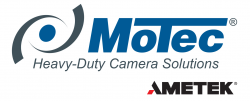 Dr Stefan Wirtz
Dr Stefan WirtzDirector of engineering
Motec
Germany
Motec's goal is to protect lives, help people and reduce costs. Assistance systems play a central role in this by providing a better view of hazardous areas around commercial vehicles and mobile machinery. The challenge is that there are many different types of commercial vehicles on the market with very different appearances. It is therefore of central importance to be able to provide systems tailored to the different use cases at the hardware and software/user interface levels.
What the audience will learn
- Challenges with AI in the commercial vehicle sector
- Flexible possibilities in the deployment of ADAS
- Smart camera/smart display/smart ECU
- Intelligent user interfaces
Enable wheel loader boom durability analysis under real working conditions
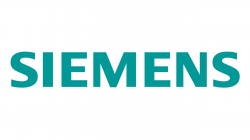 Xiaoting Kou
Xiaoting KouProduct manager
Siemens Digital Industry Software
France
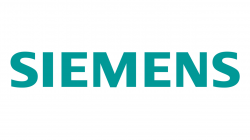 Dr Michael Hack
Dr Michael HackBusiness product line manager
Siemens Industry Software GmbH
Germany
Digital twins enable simulation of the real lifetime of structures and especially the prediction of when maintenance will be needed. Crucial to success is knowledge of the operational loads and the connection to lifetime simulation. The seamless integration of measured loads, mechanisms, structural analysis, durability study and the new smart virtual sensing technology for operational load estimation brings the digital twin to life. We show how to use this innovative framework for data fusion and predicting the lifetime of the key part in a wheel loader under real working conditions.
What the audience will learn
- Implement predictive maintenance for a wheel loader boom
- Estimate the operational loads from strain gauge measurements combined with the finite element model
- Conduct durability analysis based on the operational loads
- Predict the lifetime of the wheel loader boom under real working conditions
- Realize the real-time estimation during the operational phase
Going beyond vision to reach perception
 Sabri Bayoudh
Sabri BayoudhChief innovation officer
Arcure Blaxtair
France
AI technologies have reached unprecedented levels of performance. This presentation delves into the vast potential of AI beyond traditional machine learning methods, particularly in the industrial sector. We will explore how AI can enhance perception and understanding of complex environments. By leveraging advanced AI techniques such as LLM technology, we can ensure safer, more efficient workplaces.
Effective data-driven solutions for industrial vehicle operation and development
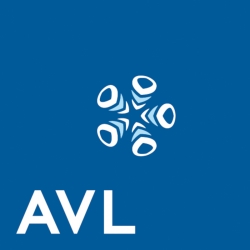 Dr Nikolaus Keuth
Dr Nikolaus KeuthHead of product and solution management
AVL List
Austria
In our presentation, we will demonstrate how data-driven methods and software solutions can help OEMs respond to customer requirements and challenges in the field, and secure their functions. We will also show how these solutions can help fleet operators reduce maintenance costs. Our solutions include monitoring fleets, enabling predictive maintenance, creating use profiles and using these profiles in development for functional validation. We will present all of this through successful customer projects. We will show how data-driven methodologies can be applied over the whole development process from concept to production to save costs and improve quality and sustainability.
What the audience will learn
- Data-driven methods and software solutions can help OEMs respond to customer requirements and challenges in shorter time
- Solutions include monitoring fleets, enabling predictive maintenance, creating use profiles and using these profiles for functional validation
- How data-driven methodologies can improve cost, quality and sustainability throughout the development process
Sensors enhancing vehicle productivity and safety
 Enzo Zanichelli
Enzo ZanichelliSensors product manager
Cobo
Italy
Electrification, automation and chase performance limits: three macro trends asking for sensorization.
Off-highway has always followed automotive trends, and sensorization will not be an exception. Many technologies are becoming affordable and applicable on off-highway vehicles, delivering more advantages than costs. New technologies are incoming and relationships with universities make them more accessible for industry. Cobo, an integration specialist, wants to be one of the market references in this field. The presentation will introduce the new Cobo sensor portfolio and roadmap and explain the key values and selling proposition of the sensors.
What the audience will learn
- Cobo is now a proactive sensor proposition
- Cobo's capability to catch the off-highway current and incoming requirements for sensors
- Cobo can integrate its sensors with a wide solutions range
Achieving industrial autonomy through realistic testing
 Dr Raphael Grech
Dr Raphael GrechTechnical strategist
Spirent Communications
UK
The realization of a future of autonomous industrial vehicles hinges on the development of robust PNT (position navigation timing) systems that can operate reliably in challenging environments. The expectation of reliable position and time information through GNSS, irrespective of the environment, becomes challenging in tunnels, canyons and environments with changing physical properties (such as open-pit mines) due to signal obscuration, multipathing and man-made and natural RF interference. The development of such robust PNT systems can only be achieved if paired with reliable test and validation data to understand and optimize how the device will perform in the real world.
What the audience will learn
- The applications of PNT technologies in industrial vehicles
- The PNT threats facing industrial vehicles and the risks these carry
- Considerations and options for testing
- How to build a high-performance test environment
- The challenges of combining multiple PNT technologies
An electronic control unit for a multidisplay system with connectivity features
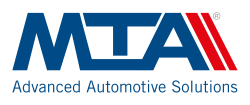 Pietro Genesin
Pietro GenesinProduct management manager, electronic business unit
MTA SpA
Italy
The Agri SIC system is a cutting-edge solution designed for off-highway vehicle applications. At the heart of Agri SIC lies an intelligent central unit that revolutionizes information management and control, enhancing reliability and cost efficiency for OEMs. Agri SIC boasts unparalleled performance, allowing for the integration of compact and small displays without compromising functionality. These displays offer exceptional quality and reliability, ensuring optimal performance even in the harshest environmental conditions. With specialized agriculture functionalities seamlessly integrated, Agri SIC empowers vehicles to manage complex services and functions simultaneously. Leveraging the latest connectivity leading-edge technologies, the system guarantees unmatched efficiency, reliability and durability while delivering top-tier reception. The presentation explores the transformative capabilities of Agri SIC, driving innovation and setting new standards in off-highway vehicle applications.
What the audience will learn
- Intelligent solutions to manage and control all the displays in the cabin, sharing data and content
- The most innovative HMI solutions applicable to off-highway vehicles with robustness and protection characteristics
- The latest leading-edge technologies for off-road vehicles
Revolutionizing human-machine interface (HMI) for operator-centric assistance
 Steffen Dieterle
Steffen DieterleCEO
Graf-Syteco
Germany
Integrating new technologies (e.g. artificial intelligence [AI] or over-the-air [OTA]) into human-machine interface (HMI) systems for mobile machinery introduces groundbreaking operator assistance functionalities. It enables context-sensitive decision support, adaptive user interfaces, automated diagnostics and global fleet update options. Additionally, it predicts maintenance needs, minimizing downtime. This synergy of the latest technologies and HMI revolutionizes the human-machine interaction, enhancing the efficiency, safety and reliability of mobile machinery, a topic extensively covered in this presentation.
What the audience will learn
- Modern human-machine interfaces
- Automation
- Digitalization
- Artificial intelligence
- Operator-centric design
Valtra 'The Boss' – case study (work lighting)
 Christian Wadell
Christian WadellGlobal R&D Director
Tyri Lights
Sweden
Part 1 – Design: brand identifier and unique functions: When Valtra developed its new tractor – The Boss – it collaborated with Tyri Lights’ R&D/design department to create a top-of-the-line lighting solution. Step behind the scenes and see the process that achieved this result: lighting solutions that have never been seen. Part 2 - INTELLilight: Valtra’s Unlimited version also offers Tyri INTELLilight for the most flexible lighting solution on the market. These adaptable lights, controlled via an app or CANbus are connected via a Bluetooth mesh. This can change the color temperature, dim the lights, group and regroup without any extra cables needed.
What the audience will learn
- Tyri's vision for the future in machine lighting (case study Valtra)
- Design matters – brand building with lights
- Design matters – unique solutions to solve complex lighting problems
- INTELLilight – the future of work lighting
Various solutions for integrating video images into HMIs for machine operation
 Andreas Ganseforth
Andreas GanseforthSenior product manager
Anedo
Germany
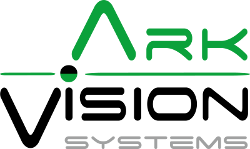 Sven Salzer
Sven SalzerManager and head of development
Ark Vision Systems
Germany
Modern HMI hardware platforms offer enough performance to map extra functionalities in addition to machine operation. The lecture shows different integration concepts of digital video into the HMI for machine operation and explains why different use cases prefer different ways of integration. One special aspect will highlight the further development of a mirror replacement system with additional features based on edge AI and its combination with machine operation.
What the audience will learn
- Integration of digital video in machine operation
- Different requirements from different use cases for video integration
- Mirror replacement system with additional AI features
Future of CAN-based embedded networks
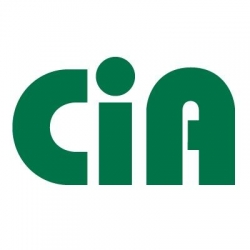 Reiner Zitzmann
Reiner ZitzmannGeneral manager
CAN in Automation
Germany
The controller area network (CAN) is widely used in commercial vehicles. For example, it serves as an embedded in-vehicle network for diesel engine control. In body applications such as concrete pumps, excavators and cranes, it allows the safe and secure operation of the vehicle’s key application. But the requirements for embedded networking are increasing. For example, it needs to provide higher data throughput to allow autonomous operation, or sophisticated communication methods to fulfill the increased safety and security requirements. The presentation provides an overview of current developments in CAN, covering CAN XL, the CAN physical layer scalability, CANsec and CAN safety protocols.
What the audience will learn
- Also in the future, CAN will be able to meet the requirements of embedded networking in heavy-duty machinery
- CAN XL provides increased data throughput and embedded security
- CAN XL allows embedding the machine in ethernet-based cloud applications (telematic)
- CiA is updating CANopen safety to meet the latest safety requirements
- Physical layer scalability allows system designers to optimize data throughput and robustness for use case
Key factors for a successful interaction design
 Dr Markus Wallmyr
Dr Markus WallmyrUX and innovation lead
CrossControl
Sweden
Today we don’t see good design as something reserved only for luxury goods; it has become a core necessity to stay relevant and successful. What are the key characteristics of good interaction design and the fundamental concepts to realize good interaction with increasingly complex and software-centric systems? This presentation will dive into interaction design with an emphasis on mobile machinery HMI systems. Supported by scientific research and years of experience it will cover the benefits and principles of HMI design as well as best practices and solution platforms that support efficient HMI realization.
What the audience will learn
- The benefits of having attention at interaction design
- The principles and approaches to building good user experiences
- The combination of hardware and software
- Platforms that support the realization of advanced applications and HMI systems
Safe remote control solution for on-road operation of commercial vehicles
 Alexander Holler
Alexander HollerGeneral manager electronics division
Inter Control Hermann Köhler Elektrik GmbH & Co. KG
Germany
This presentation is about the functional safe remote operation of commercial vehicles. It includes a proposal for a functional safe hardware and software architecture, standards to be considered and necessary restrictions. Furthermore, measures will be introduced to allow an efficient implementation of the safe control system into a commercial vehicle. Finally, an outlook will be provided about possible upcoming features for safely remotely operated vehicles.
What the audience will learn
- Proposal for the safety architecture of a remotely operated vehicle
- Applicable standards and restrictions
- Current applications of commerical vehicles
- Outlook on further developments